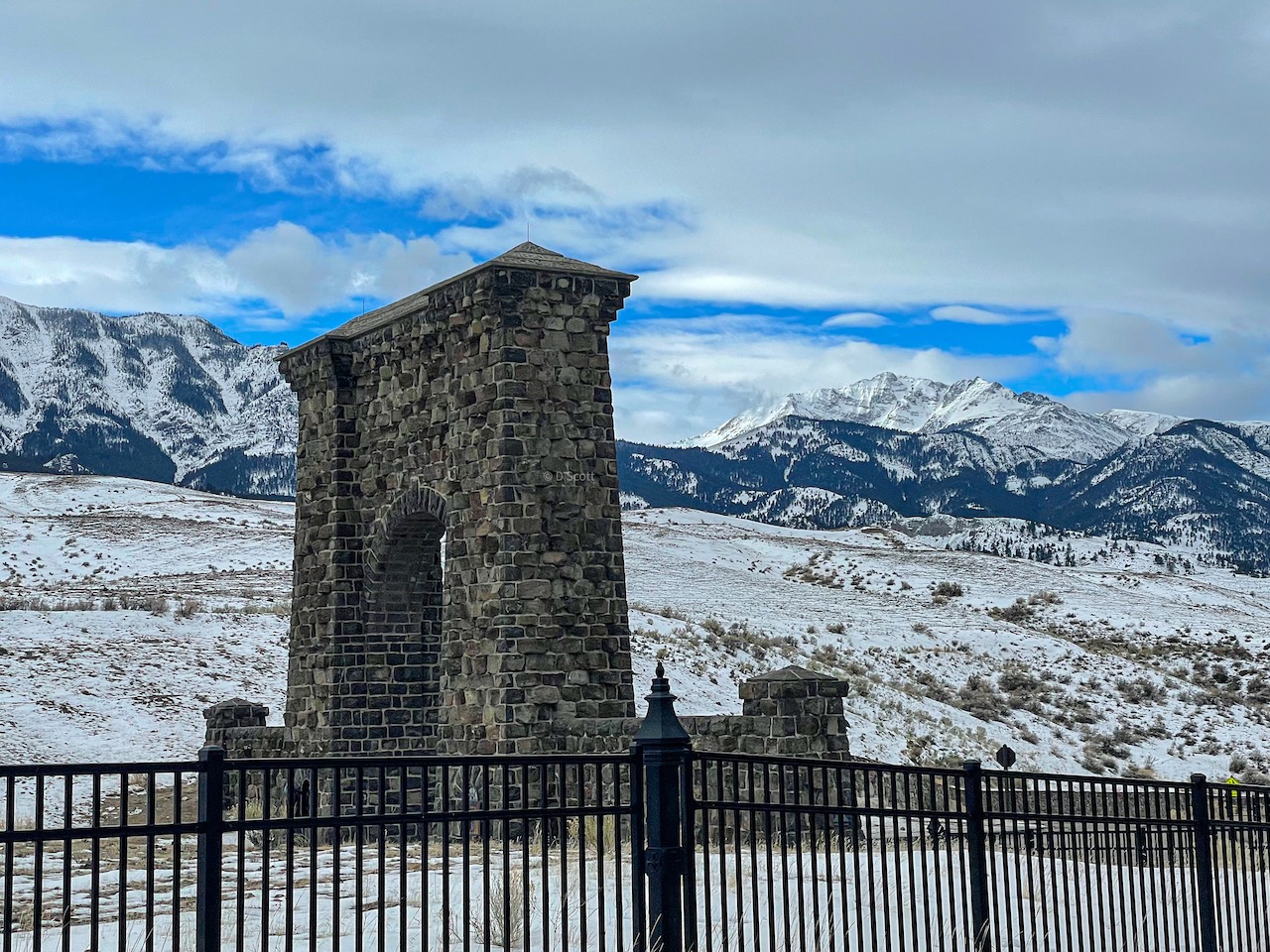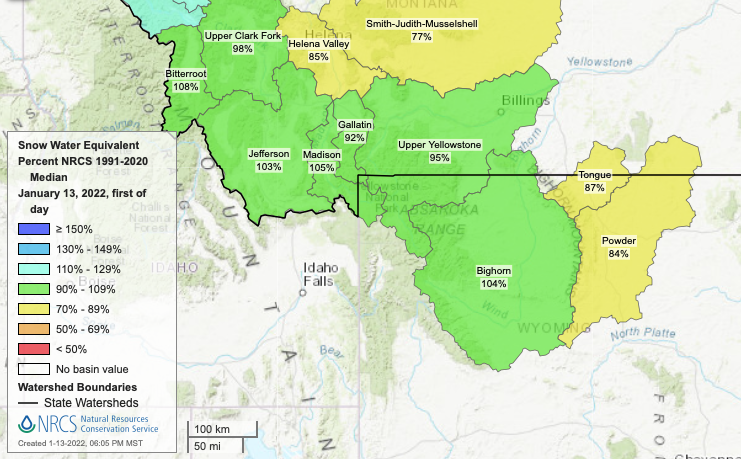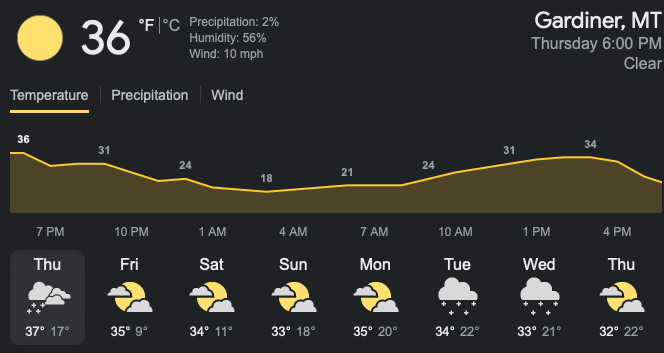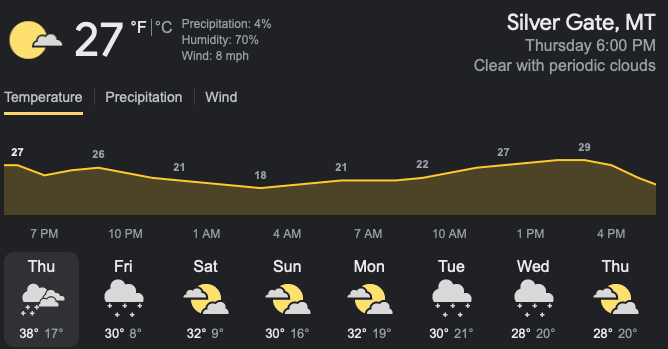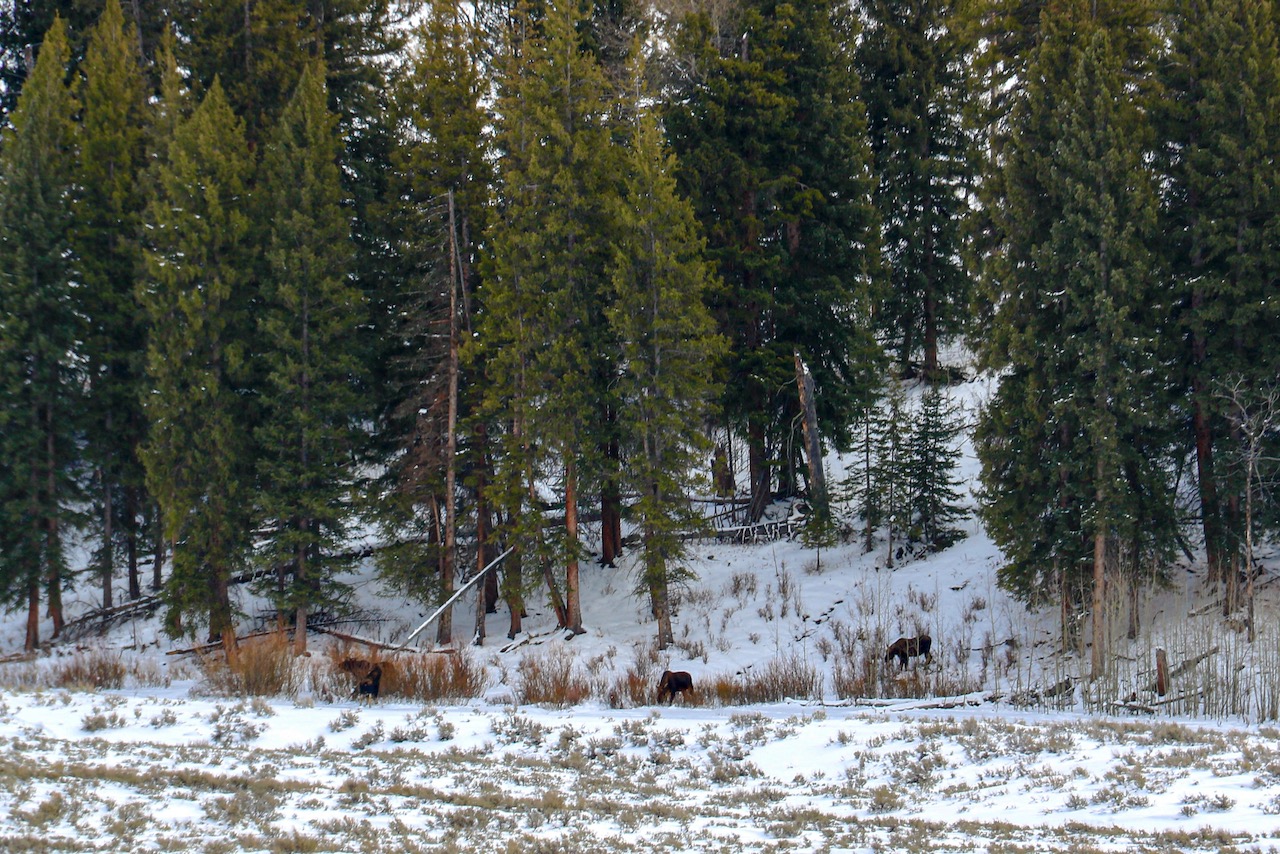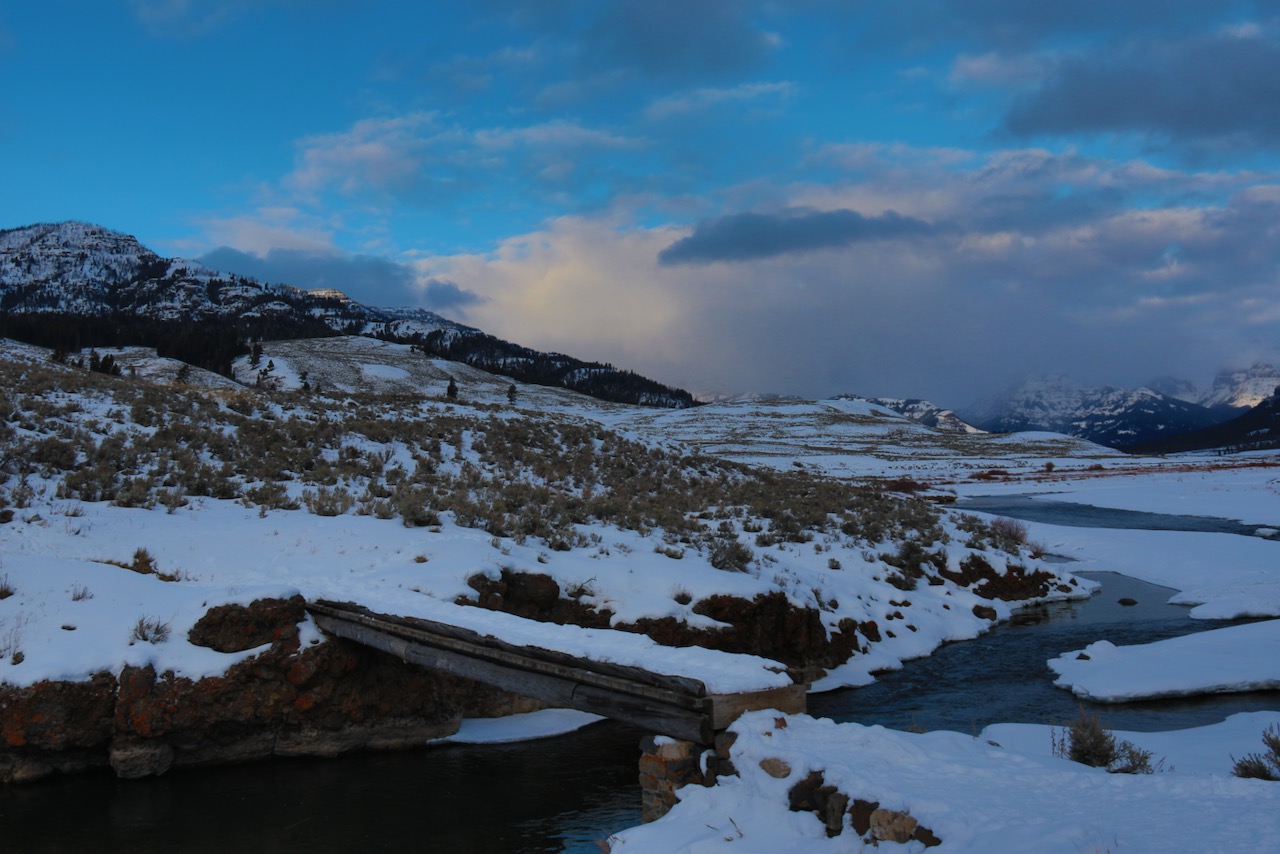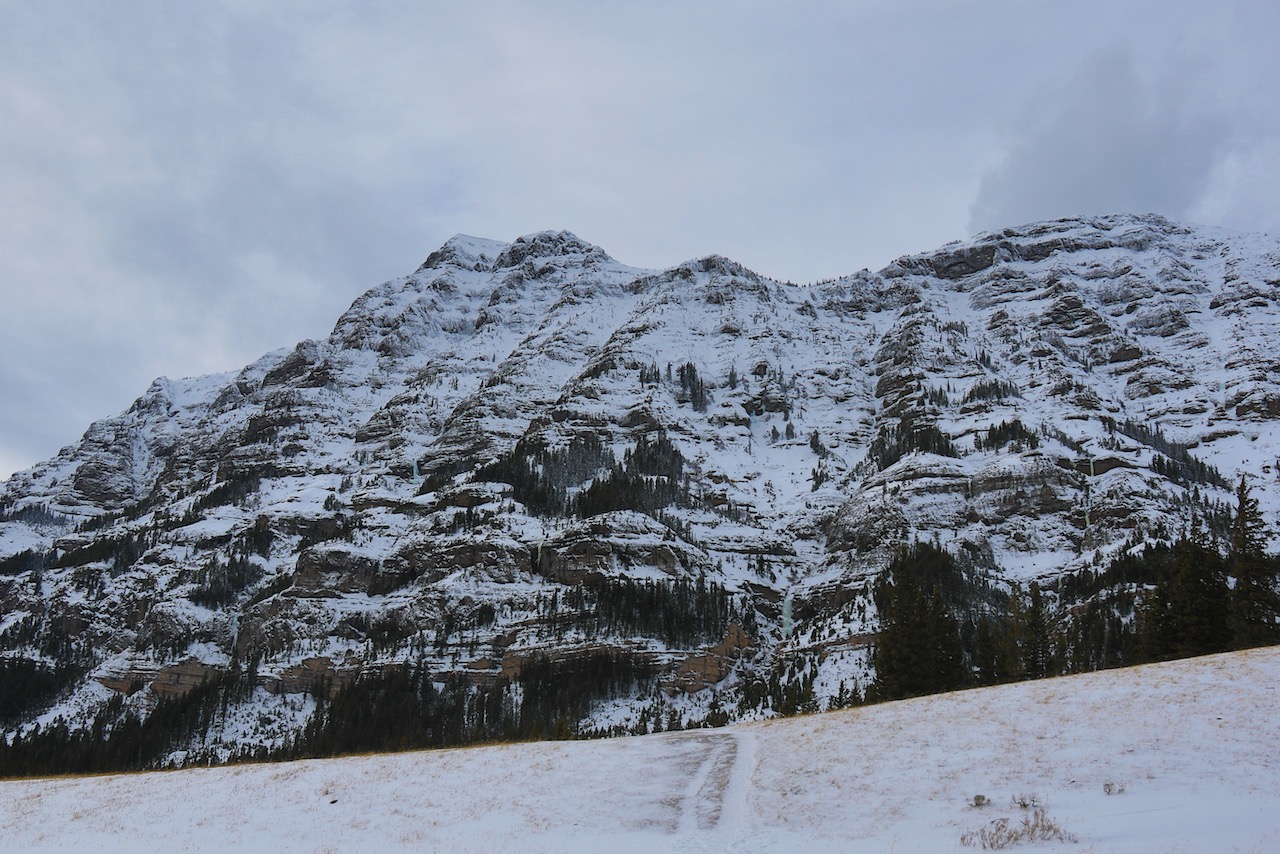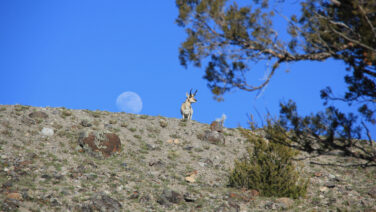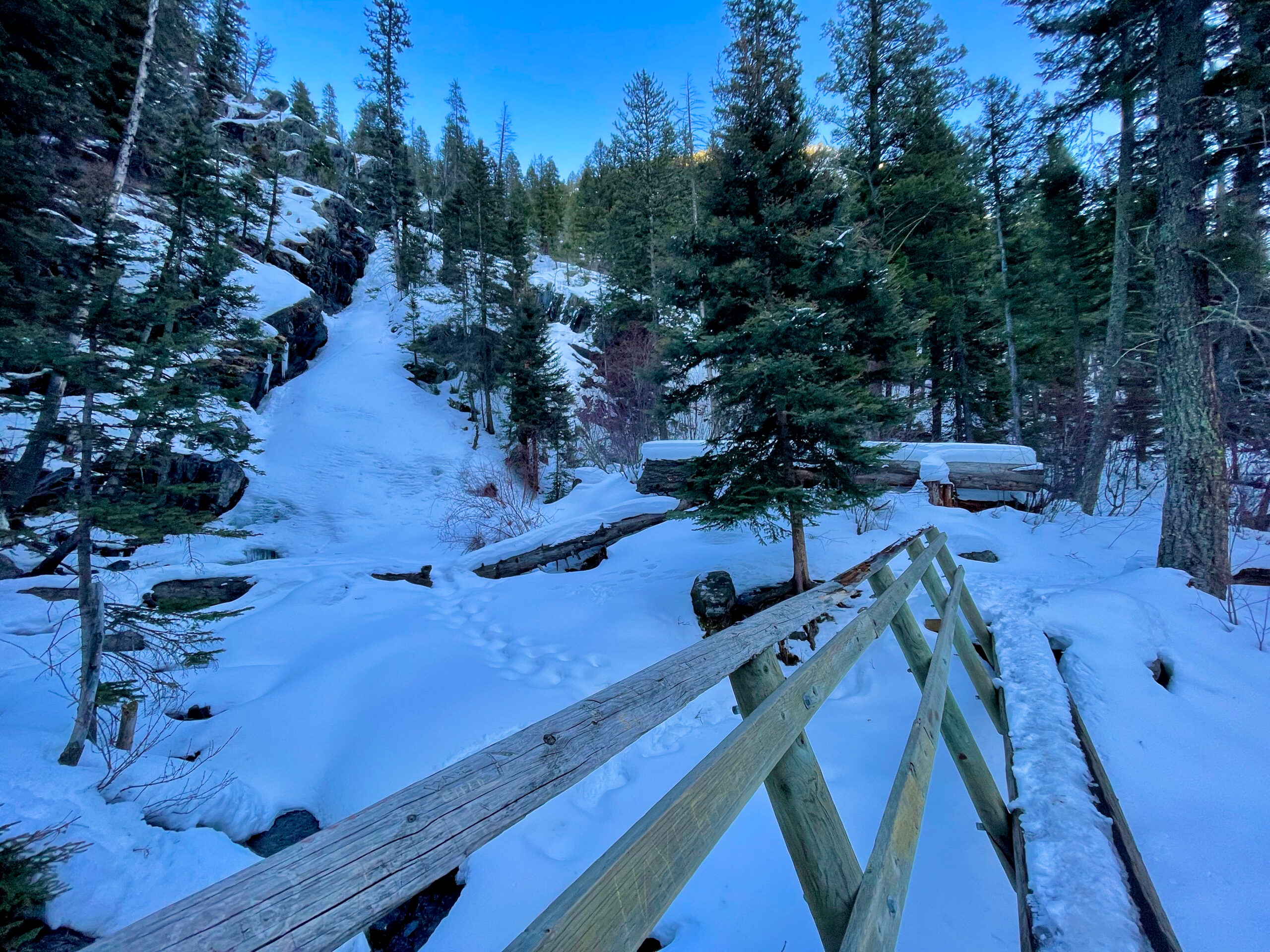This week in Yellowstone, I share the news about Yellowstone National Park’s 150th Anniversary, celebrate the release of bison out of the park, rejoice in the return of the moose, and share spots to have a picnic and a can’t miss spot for a winter hike.
Enjoying this series? Pease consider sharing the link on social media or with someone who would appreciate it. If you are heading out this way soon, I hope this helps you get ready to visit America’s first National Park. If you want to do more to support my weekly park posts, you may also want to pick up a guidebook!
BIGGEST NEWS OF THE WEEK
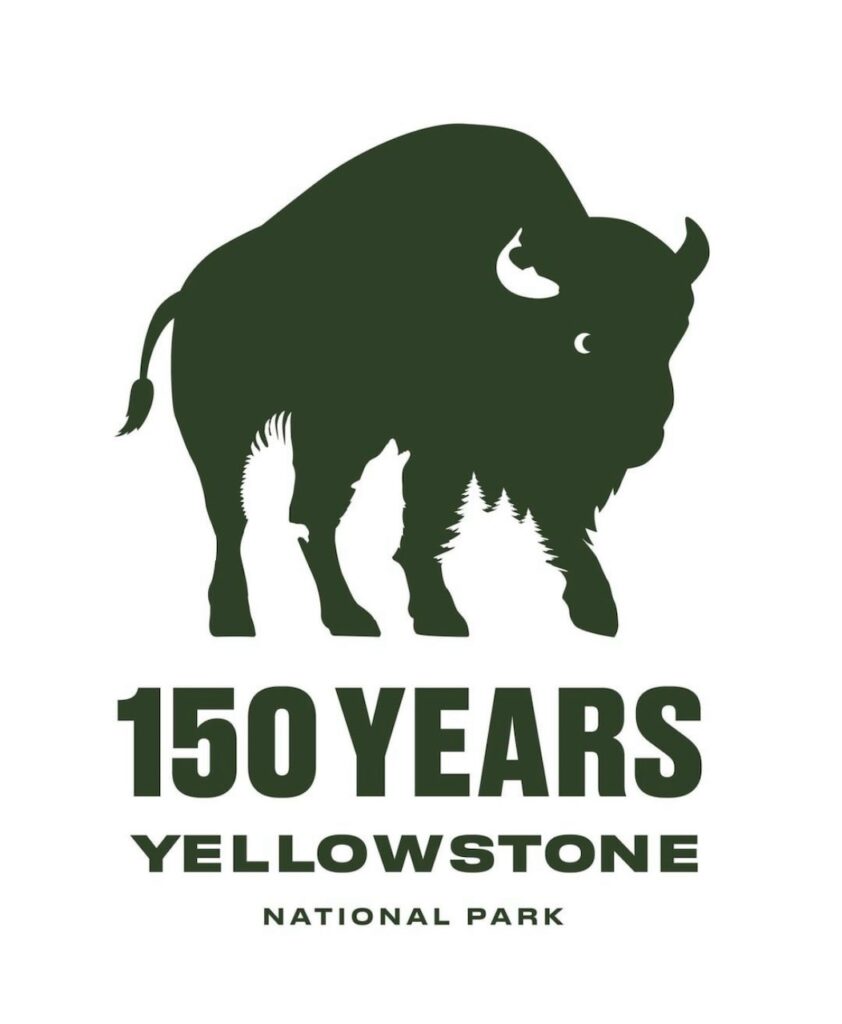
Yellowstone National Park to Turn 150 Years Old in 2022- Plans Announce
The following is an edited press release from Yellowstone National Park. Sometimes, they say all that needs to be said.
“March 1, 2022, marks the 150th anniversary of the establishment of Yellowstone National Park. Signed into law by President Ulysses S. Grant, America’s first national park was set aside to preserve and protect the scenery, cultural heritage, wildlife, geologic and ecological systems and processes in their natural condition for the benefit and enjoyment of present and future generations.
Yellowstone serves as the core of the Greater Yellowstone Ecosystem, one of the last and largest nearly intact natural ecosystems on the planet. Yellowstone has the most active, diverse, and intact collections of combined geothermal features with over 10,000 hydrothermal sites and half the world’s active geysers. The park is also rich in cultural and historical resources with 25 sites, landmarks and districts on the National Register of Historic Places.
Based on the park’s location at the convergence of the Great Plains, Great Basin, and Columbia Plateau, many Native American Tribes have traditional connections to the land and its resources. For over 10,000 years before Yellowstone became a national park, it was a place where Native Americans hunted, fished, gathered plants, quarried obsidian and used thermal waters for religious and medicinal purposes.
“Yellowstone’s 150th anniversary is an important moment in time for the world,” said Superintendent Cam Sholly. “It’s an opportunity for us to reflect on the lessons of the past while focusing our efforts to strengthen Yellowstone and our many partnerships for the future. I applaud and share the vision of Secretary Haaland and Director Sams on our responsibility to more fully engage with Tribal Nations to honor and learn from their ancestral and modern connections to Yellowstone.”
Beginning March 1, the park will host and participate in a wide range of activities to commemorate the 150th. The park has conducted substantial outreach to Native American Tribes, inviting them to participate directly in this anniversary. Multiple Tribal Nations will be present throughout the summer at Old Faithful as part of the Yellowstone Tribal Heritage Center project. Tribes are also coordinating with Yellowstone to install a large teepee village in the park near the Roosevelt Arch in August, where tribal members will interact directly with visitors about their cultures and heritage.
During this anniversary year, Yellowstone will open 40 new employee housing units throughout the park along with groundbreakings on projects totaling more than $125 million funded through the Great American Outdoors Act. These projects include two of the largest historic preservation projects in the country and a range of transportation projects that will address aging infrastructure. This year will also mark the reopening of Tower Fall to Chittenden Road (near Dunraven Pass), a $28 million road improvement project completed over the past two years.
The park will participate in the 15th Biennial Scientific Conference on the Greater Yellowstone Ecosystem hosted by Montana State University, the Wyoming Governor’s Hospitality and Tourism Conference, and the University of Wyoming’s Yellowstone National Park 150 Anniversary Symposium. The park is also grateful to Wind River (Eastern Shoshone and Northern Arapaho) and other Tribal Nations for planning a multi-tribal gathering on the Wind River Reservation later in the year.
Due to COVID-19, the park does not currently have large events planned; however, this may change as the year progresses.”
I’ll of course keep you updated on any cool events throughout the year and let you all know how the events scheduled go. I will attend as many of them as I can and if you will be there for any of them, let me know and we can hang out or something!
OTHER NEWS
Yellowstone Pulls off Another Successful Transfer of Bison
It seems like the world is inundated with negative news and species loss, which is why I was excited to share this news with everyone. On January 12th, the Assiniboine and Sioux Tribes of Fort Peck Indian Reservation, with the help of Yellowstone National Park, completed the transfer of 28 Yellowstone bison to the Fort Peck Reservation in Poplar, Montana. The Fort Peck Reservation is home to two separate Native American nations, the Sioux and the Assiniboine, each composed of numerous bands and divisions. The Reservation is in the extreme northeast corner of Montana, on the north side of the Missouri River.
The NPS and Fort Peck Assiniboine and Sioux Tribes, with the help of others, started the Bison Conservation Transfer Program to identify brucellosis-free bison and transfer them to new areas as an alternative to sending them to slaughter. The program has led to the largest transfer of live Yellowstone bison among Native American Tribes in history. Since 2019, 182 bison have gone to the Assiniboine and Sioux Tribes of the Fort Peck Indian Reservation. Of those, 82 animals were transferred to the InterTribal Buffalo Council who distributed them to 18 Tribes in 10 states.
The bison transferred this week were captured at Stephens Creek in the northwest corner of Yellowstone National Park in March 2020. Twenty males completed quarantine in the park and a small family group of eight (1 male, 4 females, 3 calves) completed quarantine in the nearby facility at Corwin Springs. 67 animals are still in the Bison Conservation Transfer Program, with 80-120 new animals to be entered into the program this winter.
His is super cool news and I am happy to hear about the return of bison to regions where they once thrived. To also know that indigenous communities can once again live with and around bison is equally as awesome. This is a great step in the right direction and is a program I am excited to see grow and expand.
SNOWPACK UPDATE
With the decline in snowfall these past few days, the snowpack is balancing out a bit. Currently, the snowpack for the park is around 100% of normal.This is welcome news and without a serious warm stretch in the forecast, snowmelt should be minimal. It is important to note that the normal snowpack percentages used for these maps are only based on the last 20 years, so I am unsure how it looks compared to historical numbers. Snow-depth is decent, but still a bit low in the eastern parts of Lamar Valley. Sage is still easily seen. Without more delay, here is the snow map:
WEATHER FOR THE COMING WEEK
If you are a fan of highs in the 30s and lows in the 20s and teens, this is the week for you! This weekend will be partly sunny throughout the area, with snow potentially returning Monday night through Wednesday or Thursday. Accumulations should not be too extreme and will be more significant in the evening and night hours. Seems like a pretty straight forward weather week and typical weather for this time of the year. Maybe even a little warm. Here is your forecast for the week:
This is the weather.com forecast for the three closest towns to the park- Gardiner, West Yellowstone and Cooke City. While they don’t specifically cover the entire region, these forecasts give a great idea of what to expect all around the region As always, weather can and does change fast in the park, so always be prepared for anything.
WILDLIFE WATCH
The moose are back! If you have been looking at Yellowstone centric social media, you may have noticed an uptick in moose images. That is because they have emerged from their upper elevation haunts and dropped into the lowlands near the roads. Over the past week, a handful of moose have been spotted between the Petrified Tree and Pebble Creek, with a group of four or five individuals hanging out around the trailhead for the Lamar River Trail on Wednesday. The males, which have lost their antlers for the year, are a great sight to see, as they are one of the harder animals to locate in the park.
Elsewhere, bison and elk and roaming in larger numbers, often hanging out near the roads throughout the open part of the park. Coyotes are also a bit more common to see, often walking near the road, out in the valleys, or sitting up on ridge lines. Bighorn sheep sighting have been consistent around the cliffs between Mammoth and Gardiner, as well as the hillside between the hitching post parking area on the east end of Lamar Valley to the hills near the confluence of Soda Butte Creek and the Lamar River.
Wolves have been spotted from a distance in the Hellroaring area, appearing as small dots through spotting scopes. They should be closer in the coming days or weeks, I imagine. Elsewhere, I spotted wolf tracks while cross country skiing near the Tower Campground, but only tracks, no sightings. This might be an area with checking out in the early morning hours, if you have a 5+ mile snow adventure in you.
Want the best tips and locations for wildlife sightings on your Yellowstone trip? I wrote a book for that very purpose! Pick up your digital ebook or paperback copy now!
ROADS AND CAMPGROUNDS
Aside from occasional spots of ice and snow drifts, the road between Gardiner and Cooke City, Montana, running through the northern range of the park, is looking great. Icy sections aren’t always marked and tend to be found near blind corners, so drive slow and be able to stop quickly, as animals are starting to use the road a bit more now that the snow has returned. I do not anticipate any serious issues with the roads this weekend and coming week, but always be ready for anything. It is extremely difficult to consistently and accurately predicted the weather patterns in the region.
For up-to-date road information, call (307) 344-2117 for recorded information, or sign up to receive Yellowstone road alerts on your mobile phone by texting “82190” to 888-777 (an automatic text reply will confirm receipt and provide instructions). Anticipate possible road closures due to inclement weather and dangerous driving conditions.
Planning on camping in the park this week?
Continue to enjoy the solitude. I sound like a broken record here, but if you camp at Mammoth, you won’t have many, if any, neighbors. On Wednesday the 12th, I saw one camper in the entire campground. While not popular, this coming week would be a good week to go camping down there, as the temperatures aren’t going to be as cold as they could be. You can check the status of campgrounds in the park online here.
HIGHLIGHT OF THE WEEK
Journey Through the Snow to the Lamar River
Right between the Soda Butte Cone and the parking area/bathroom spot known as Hitching Post to the west, the pullout and trek found at the Specimen Ridge/Lamar River Trailhead is a worthy stop. Often giving glimpses of bison, coyotes and occasionally moose and wolves, this trail system in the winter is a lovely place to spend an hour or six wandering the snow-covered prairies. You’ll need snowshoes to best enjoy this hike, otherwise be ready to post-hole in knee deep snow for awhile. The latter option is far less fun and way more tiring.
With a pair of snowshoes, you’ll be able to cross the bridge over Soda Butte Creek before making your way to the huge expanse of prairie ahead of you. The bridge alone is worth the stop, as if gives great views of the mountains to the east and the prairie to the west. Past the bridge and to the east, Mount Norris climbs toward the sky, often with a few elk or bison hanging out on it. It will be this first section where you have a good chance to see wildlife a little closer than normal. Bison tend to hang out around here often. You will be able to see them from the start of the hike, so always take a look before heading out.
To reach the Junction of the Specimen Ridge Trail with Lamar River trail is about a mile and a half one way. This junction isn’t incredibly scenic, but there may be wildlife hanging around. From here, you have three options. The first is to return to the car. The second is to wander up the Lamar River Trail for a bit. The third, and the one I recommend, is to hike another half mile or so up Specimen Ridge Trail until you reach the Lamar River. Walking up and down the riverbanks, you may see wolf prints, as well as elk, bison and deer tracks in the snow. You may also get a peak at an otter, as they are known to be seen in this area.
TIP OF THE WEEK
Two Can’t Miss Lunch Spots in the Park
Finding a place to eat while visiting the park can occasionally be a challenge. While many will return to Mammoth, or head out of the park at Silver Gate or Gardiner to eat, this who want to maximize their daylight hours in the Northern Range need to find somewhere in the park to eat.
You’ll need to pack a lunch. There are no amenities between Mammoth and Silver Gate, and even then your options are extremely limited. Your best bet is to pack a lunch the night before or the morning of your adventure and have it in your car, ready to be devoured by hungry adventurers. I always bring way too much food with me, as well as plenty of extra drinks to consume. Once you have your meal ready to go, the question becomes where should you stop to eat.
In the summer, picnic areas abound, granting beautiful vistas from picnic tables warm and in the shade. In the winter, those dining spots are cold and covered in snow, rendering them pretty much useless. Therefore, you may have to stand and eat or eat in your car. Admittedly, this doesn’t sound exciting, but there are a few locations where stopping and eating becomes an extension of your trip. These are two classic spots.
The first spot, out east, is the pullout that overlooks Barronette Peak. Towering high into the clouds or blue sky, this peak is clad with frozen waterfalls, stunning scenery and even a potential to spot some wildlife. Bison and moose are known to linger on the nearby hillside, while on the mountain occasional glimpses of mountain goats can be gained.
If that doesn’t interest you, there is a pullout on the north side of the road, between Mammoth and Tower Junction, that gives equally impressive views of the Helloraring Area. With binoculars or a spotting scope, you will see bison and elk, and may see wolves and bighorn sheep. This spot is well-known and always with the stop.
WANT TO KNOW MORE?
Curious about something not mentioned in the post?
Send me an email or message on social media and let me know how I can help.

